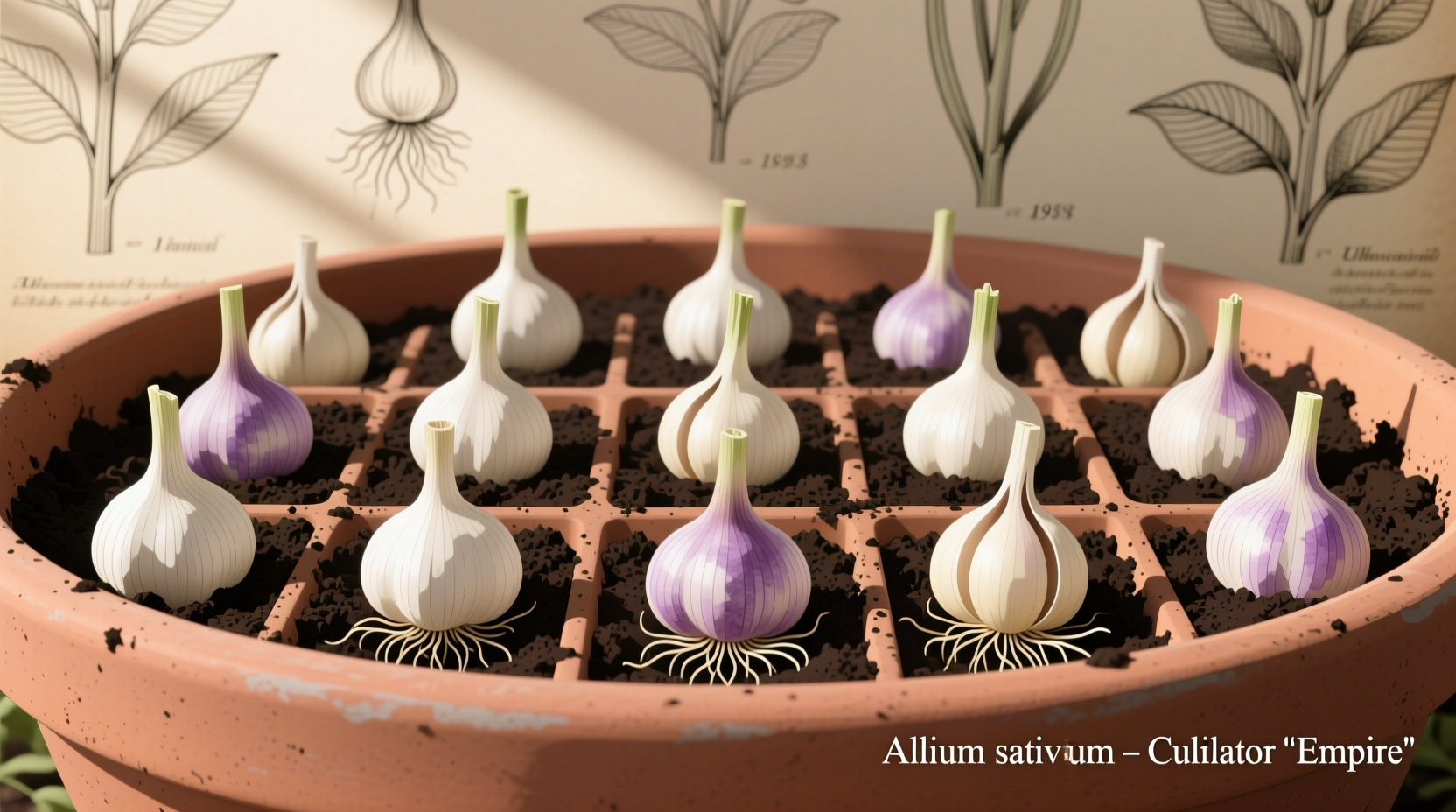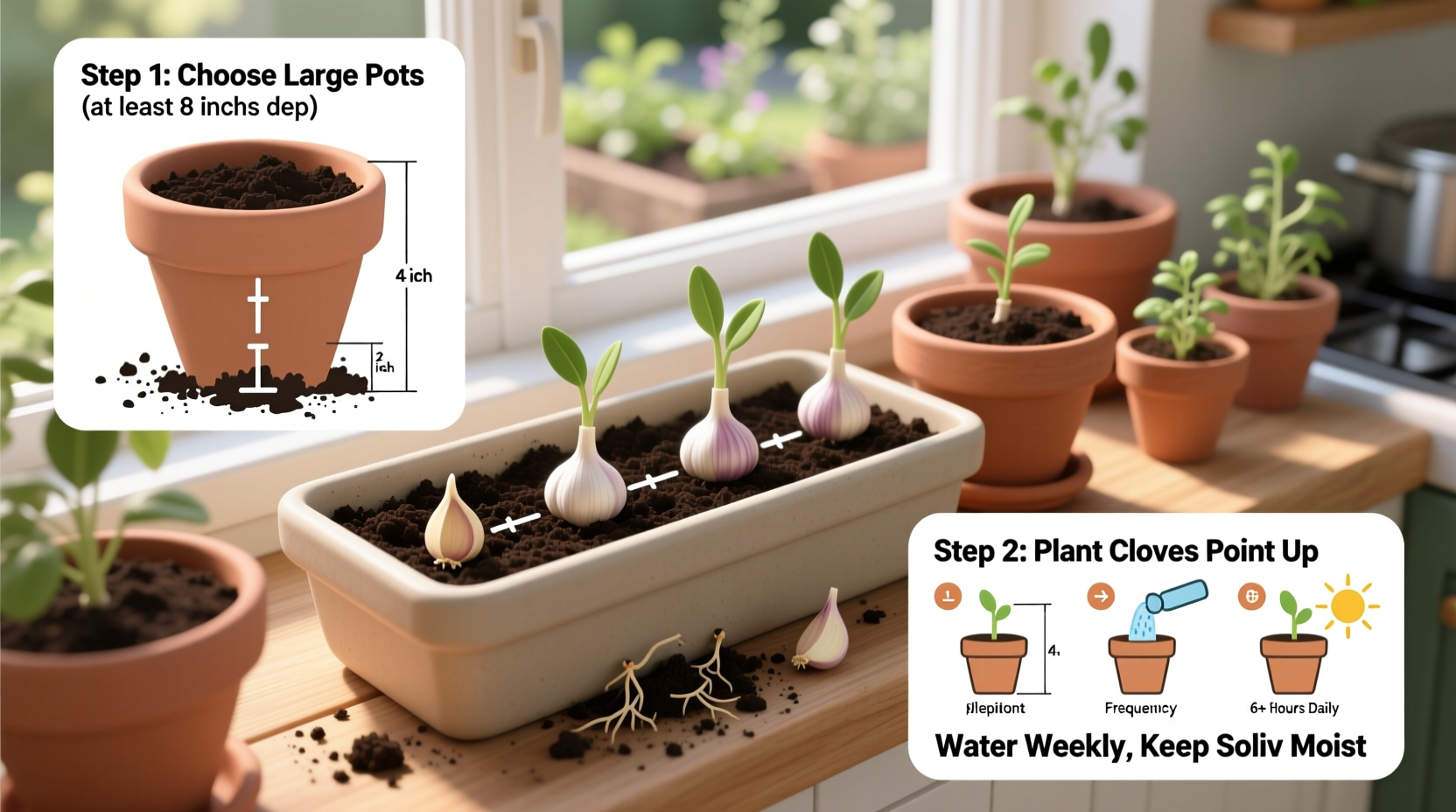Planting garlic in containers is simpler than most gardeners realize. You can successfully grow garlic in pots by selecting the right variety, using a container at least 6-8 inches deep with proper drainage, planting individual cloves pointy-end up in well-draining soil during fall, and harvesting when the lower leaves turn yellow in summer. This space-efficient method works for balconies, patios, or small yards, producing garlic heads comparable to garden-grown varieties when following proper container techniques.
Why Container Garlic Beats Traditional Gardening
Container gardening solves common garlic-growing challenges. Unlike in-ground planting, containers give you complete control over soil conditions—critical since garlic requires loose, well-draining soil to prevent rot. They're ideal for urban gardeners with limited space, allowing you to grow garlic on balconies, rooftops, or patios. Containers also let you move plants to optimize sunlight exposure or protect them from extreme weather. Most importantly, container-grown garlic avoids soil-borne diseases that often plague garden beds.
Choosing Your Garlic Variety and Container
Selecting the right garlic variety determines your success. Hardneck varieties like 'Music' or 'German Extra Hardy' perform better in containers due to their cold tolerance and larger cloves, though softneck types such as 'Inchelium Red' work well in warmer climates. Always use organic garlic cloves from seed suppliers—supermarket garlic often contains growth inhibitors.
| Container Type | Minimum Size | Drainage Needs | Best For |
|---|---|---|---|
| Plastic pots | 6-8" deep | 3-4 drainage holes | Cold climates (retains heat) |
| Terra cotta | 8-10" deep | Multiple large holes | Warm climates (breathable) |
| Fabric grow bags | 5+ gallon | Self-draining | All climates (air-prunes roots) |
Container size directly impacts bulb development. Choose pots at least 6-8 inches deep with equivalent width—garlic roots grow downward but need lateral space for bulb formation. Five-gallon fabric grow bags provide ideal conditions, while standard 8-inch pots work for 3-4 cloves. Ensure all containers have multiple drainage holes; garlic suffers quickly in waterlogged soil.

Soil Preparation: The Secret to Plump Bulbs
Garlic demands specific soil conditions that differ from typical potting mixes. Create your blend using:
- 60% high-quality potting mix (not garden soil)
- 30% compost for nutrients
- 10% perlite or coarse sand for drainage
This combination prevents compaction while providing steady nutrition. Avoid moisture-control mixes which retain too much water. Fill containers leaving 2 inches below the rim for watering space. Texas A&M AgriLife Extension confirms garlic requires soil pH between 6.0-7.5 for optimal growth—test your mix with inexpensive strips.
Planting Process: Timing and Technique
Fall planting produces the largest bulbs. In most climates, plant 4-6 weeks before first frost—typically September to November in northern zones, October to December in southern regions. Follow these steps:
- Separate garlic bulb into individual cloves (keep skins intact)
- Place cloves pointy-end up, 2 inches deep, 4-6 inches apart
- Cover with 2 inches of soil mix
- Water thoroughly until drainage flows out bottom
- Add 2-inch straw mulch layer to regulate soil temperature
Planting depth is critical—too shallow exposes developing bulbs, while too deep delays sprouting. Cornell Cooperative Extension research shows cloves planted at 2-inch depth produce 30% larger bulbs than those at 1-inch depth.
Seasonal Care Guide: From Sprouting to Harvest
Container garlic requires different care throughout its growth cycle:
Winter (After Planting)
Mulch containers with straw to protect cloves from freeze-thaw cycles. Water only when top inch of soil feels dry—overwatering causes rot. In zones below 20°F, move pots against house foundation for warmth.
Spring (Active Growth)
Remove mulch when shoots reach 2 inches. Water when top 1 inch dries out—containers need more frequent watering than garden beds. Apply balanced organic fertilizer every 3 weeks. Cut scapes (flower stalks) from hardneck varieties when they curl to redirect energy to bulb growth.
Summer (Harvest Time)
Reduce watering when lower leaves yellow. Harvest when 40% of leaves brown but 60% remain green—typically June-July. Stop watering completely 1 week before harvest to dry soil.
Harvesting and Curing: Don't Skip These Steps
Improper harvesting ruins months of work. Gently loosen soil with trowel and lift entire plant. Brush off excess soil but don't wash bulbs. Cure in shaded, well-ventilated area for 2-3 weeks until outer skins rustle. The Royal Horticultural Society recommends curing at 25-27°C with 70-80% humidity for optimal storage life.
Troubleshooting Common Container Issues
Yellow leaves often indicate overwatering—let soil dry completely before next watering. Small bulbs usually mean insufficient sunlight (garlic needs 6+ hours daily) or overcrowding. White rot appears as white fungus on roots—remove affected plants immediately. Prevent pests by spraying neem oil solution every 2 weeks during active growth.
When Container Garlic Isn't Ideal
While versatile, container growing has limitations. In extremely hot climates (consistently above 90°F), containers heat up too quickly for proper bulb development. Commercial growers needing large quantities should use garden beds. Container garlic also requires more frequent watering during dry spells—if you travel often, consider self-watering pots or asking a neighbor for help.











 浙公网安备
33010002000092号
浙公网安备
33010002000092号 浙B2-20120091-4
浙B2-20120091-4